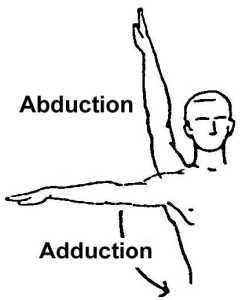

MedFriendly®


Range of Motion
In the field of medicine, range of motion is (often
abbreviated as ROM) is the direction and distance that
a joint moves between a fixed and flexible position. A
joint is a place where two bones contact each other.
Range of motion in a joint can be measured with
physical examination via behavioral observations
and/or with a device known as an arthrometer. Range
of motion is measured in degrees of a circle. A circle
has 360 degrees. Thus, moving a ball and socket joint
(e.g., shoulder) in a circular motion would be a range of
motion of 360 degrees. Only being able to move a joint
around in a half circle would be a range of motion of
180 degrees (since that is half of 360 degrees). Not all
joints are capable of moving 360 degrees, however.
FEATURED BOOK: Physical Rehabilitation
There are numerous reasons why range of motion can be restricted such as decreased
muscle use, muscle atrophy (tissue loss), a bone break, joint displacement, muscle tears,
and disease (such as arthritis, which is an inflammatory condition of the joints). These
conditions can result in aches and pains, stiffness, and/or swelling, which all can reduce
range of motion. Decreased range of motion decreases the functional capabilities of the
joint. Physical and occupational therapies uses exercises and stretching techniques to
"Where Medical Information is Easy to Understand"™
There are three types of these exercises. One is known as AROM
(active range of motion) in which the joint is moved without any
assistance provided to the muscles near the joint. Another is
AAROM (active assistive range of motion) in which the muscles
near the joint are used to perform the exercise but some help is
needed from the therapist or from equipment to perform the
exercise. Finally, there is passive range of motion (PROM), in which
the patient puts forth no effort to move the joint and is completely
dependent on the therapist or equipment to perform the exercise.
These exercises can be done before or after surgery (if surgery is
needed), in addition to other techniques such as electrical
stimulation and application of hot or cold compresses. Range of
motion is also known as range of movement.















